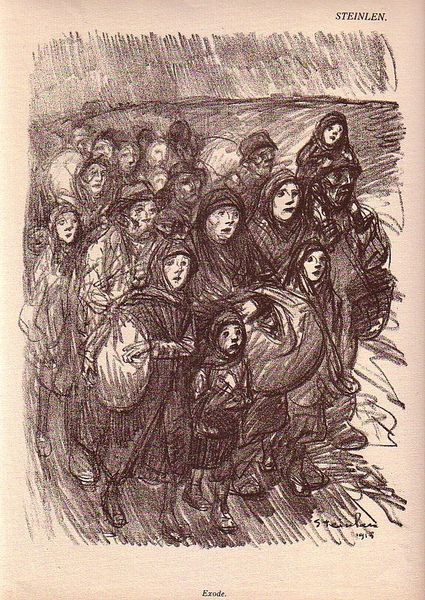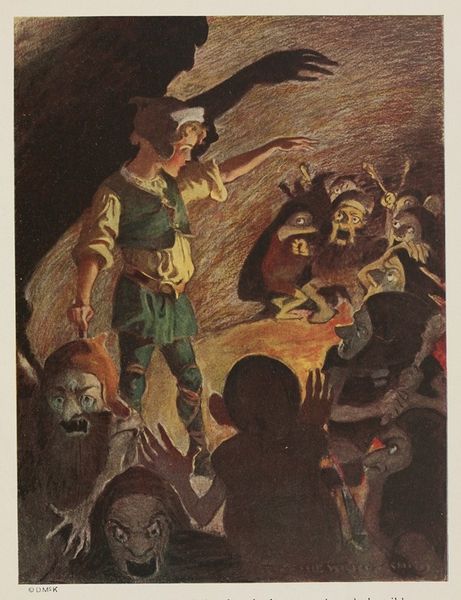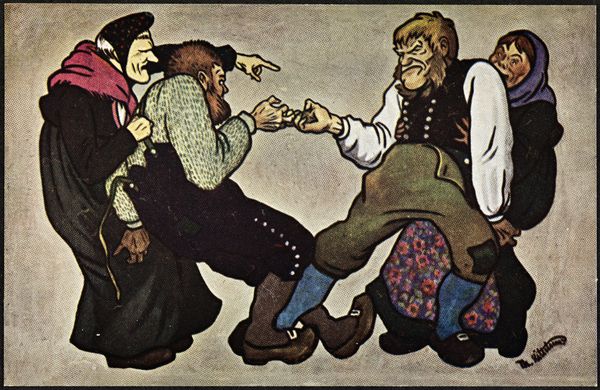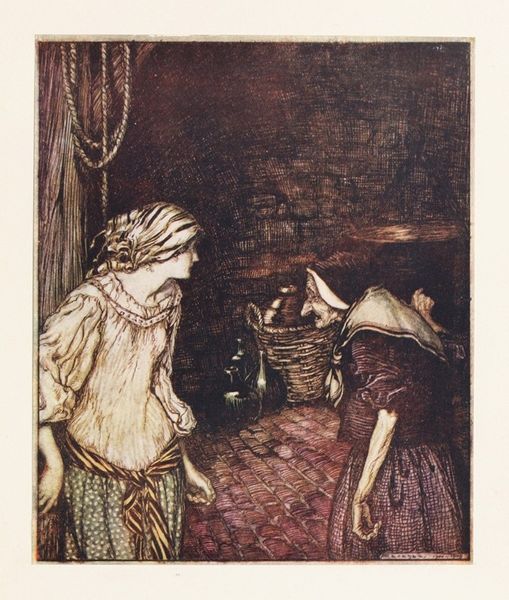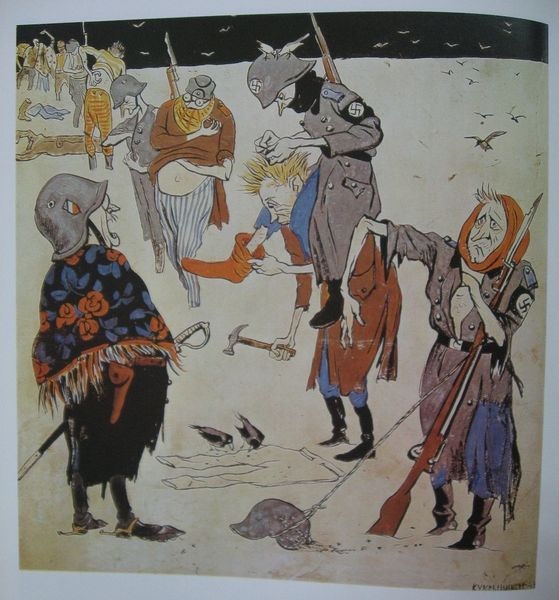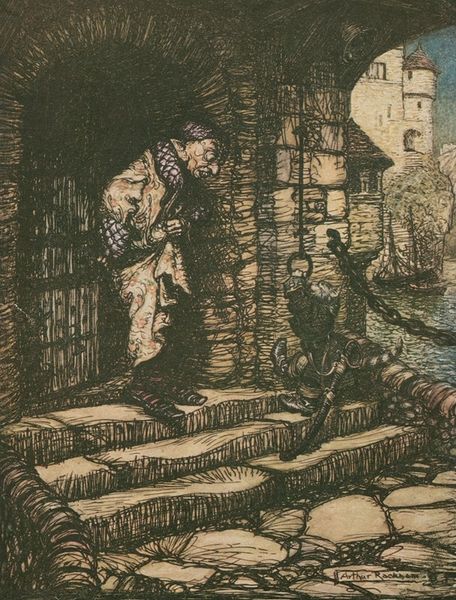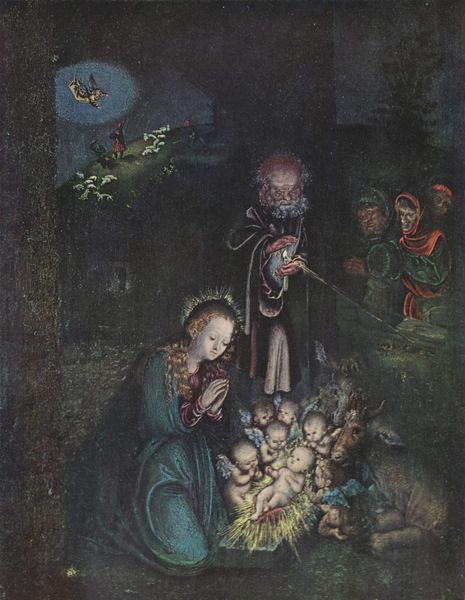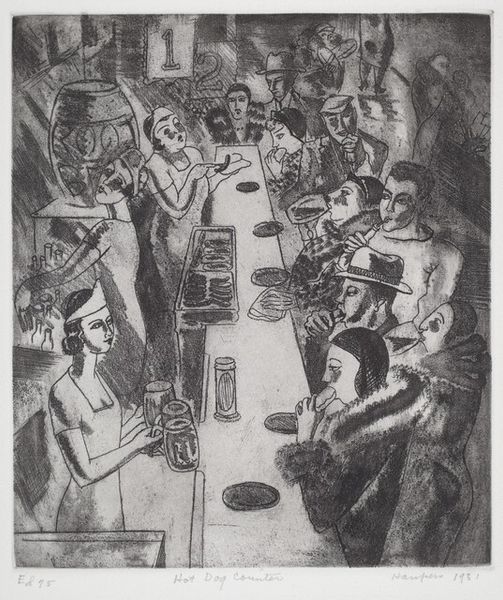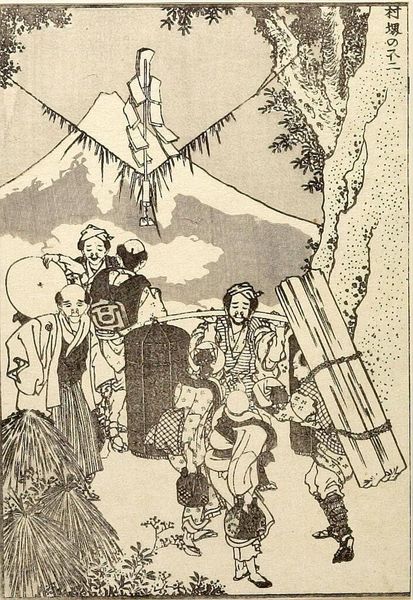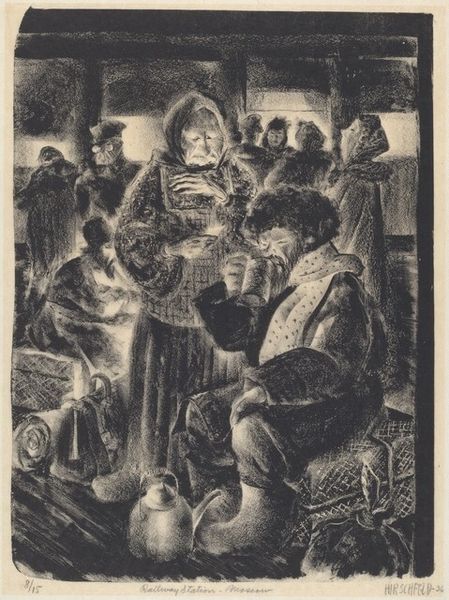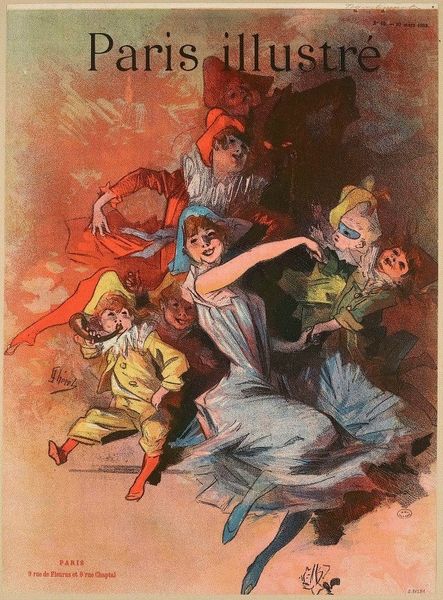
tempera, painting
#
portrait
#
tempera
#
painting
#
graffiti art
#
soviet-nonconformist-art
#
social-realism
#
naive art
#
painting art
#
genre-painting
Copyright: Public domain
Curator: Let's discuss Azim Azimzade’s "Wedding of the Poor People," executed in tempera, circa 1931. What strikes you initially? Editor: There's a raw, pulsing energy despite the drab setting. Everyone's packed into this room like sardines, but there's a vibrant dance happening at the center. It feels incredibly human, both joyous and a bit suffocating, you know? Curator: Precisely. Note the spatial compression: figures layered atop one another, minimal depth. The palette is subdued, yet Azimzade deploys color strategically to direct our gaze. Observe the dancer’s attire: the rose-pink top and the flowing patterned skirt. It creates a visual focal point amid the somber tones. Editor: That dancer! Total rockstar in the middle of chaos. And look at everyone watching her, this collective breathlessness. There’s real emotion captured here—relief, maybe? A brief escape from whatever hard lives they’re leading? It almost feels… defiant. Curator: An astute observation. The artwork resonates within the context of its time. Azimzade, though working within a Socialist Realist framework, subtly critiques social inequities through these intimate depictions. He highlights communal solidarity as both a source of strength and a consequence of shared poverty. Consider also the artist's deliberate use of a naive style: It amplifies the sincerity, stripping away any romantic idealization. Editor: It's like Azimzade is saying, "Look, these aren’t poster people. They’re complicated. They laugh, they hurt, they dance despite it all." It dodges propaganda territory, heads straight for the human heart, doesn't it? Plus, there's a bit of hope sprinkled here and there—flickers in eyes and maybe that one musical instrument to hint to something beautiful inside all. Curator: Indeed, it encapsulates a shared human experience. The geometric forms, rhythmic patterns, and the vibrant color strategically placed, invites further reflection. Editor: So, a wedding ain't just a party but the resistance to give into sorrow or daily suffering by dancing with our bare souls under a poorly lit roof, surrounded by beloved ones, in all that mess... Wow, heavy thoughts but pretty painting though. Curator: Yes, art that demands to be felt as much as interpreted is, arguably, the most impactful.
Comments
No comments
Be the first to comment and join the conversation on the ultimate creative platform.
